By 2025, the convergence of technology and fashion will have come a long way, transforming all aspects of the global fashion business. What was a budding trend is now a mainstream phenomenon that fuels innovation in design, manufacturing, retail, and consumer experiences. With the speeding up of digitalization, technology has become an integral component of fashion, shaping the way clothes are designed, manufactured, sold, and worn. From Artificial Intelligence (AI) to 3D Printing, Blockchain, and virtual shopping experience, 2025 is seeing an age where the lines between the physical and Digital Fashion are dissolving, opening up new opportunities for consumers and brands alike.
Here, we discuss how online trends are transforming the world of fashion in 2025 and what it portends for the global fashion of the future.
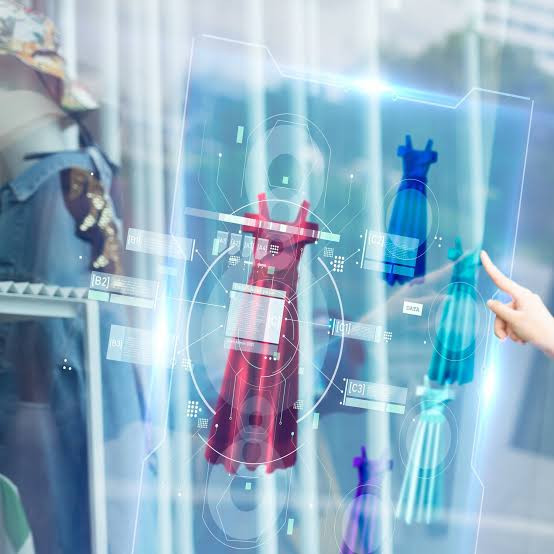
Photo credit: TEXINTEL
1. AI-Powered Design and Trend Forecasting
Artificial intelligence is now a staple of fashion designing and trend prediction in 2025. Fashion brands, houses, and independent designers are utilizing AI to simplify the design process, predict trends, and design pieces that appeal to worldwide consumers.
AI-Driven Design: AI-based software is assisting designers in creating new, intricate patterns and designs that would have taken longer to develop by hand. For instance, AI software can scan data from past collections, social media, and customer behavior to create forecasts for what styles, colors, and cuts will be trending in the next seasons. This enables designers to work more effectively, producing on-demand collections that closely match consumer demand.
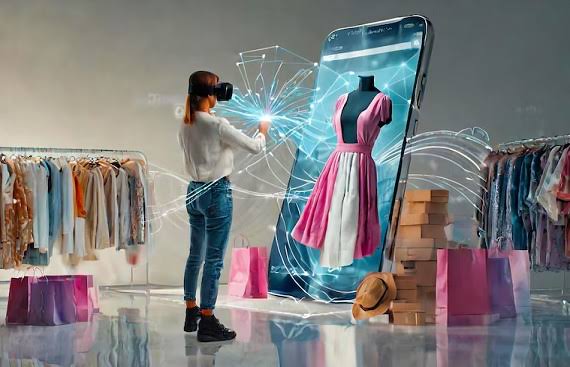
Photo credit: Siliconindia
Further, AI-based platforms enable prototyping virtually, with the ability to see ideas in 3D immediately, minimizing the use of physical samples and accelerating the process of design.
Data Analytics Trend Forecasting: In 2025, AI is also revolutionize how brands forecast trends. By examining large sets of consumer data like browsing history, social media activity, and buying behavior, AI platforms like Heuritech and Edited forecast which styles will reign supreme. Brands no longer need to guess or use stale seasonal trends; they can design collections based on real-time data, resulting in more accurate, timely, and consumer-driven designs.

Photo credit: Forbes
2. 3D Printing and On-Demand Manufacturing
The influence of 3D printing in fashion has increased manifold over the past few years, and by 2025, it is transform the process of garment production. This technology provides limitless opportunities for designers to design personalized clothing and accessories that are innovative and sustainable.
Personal Fashion and Customization: 3D printing facilitates hyper-personalization, allowing consumers to design and personalize their apparel. In 2025, fashion companies are providing consumers with the ability to make adjustments to designs, select fabrics, and even pick the ideal fit, all prior to a garment being printed. This just-in-time manufacturing approach minimizes waste by not requiring mass production, where excess stock is left to end up in landfills.
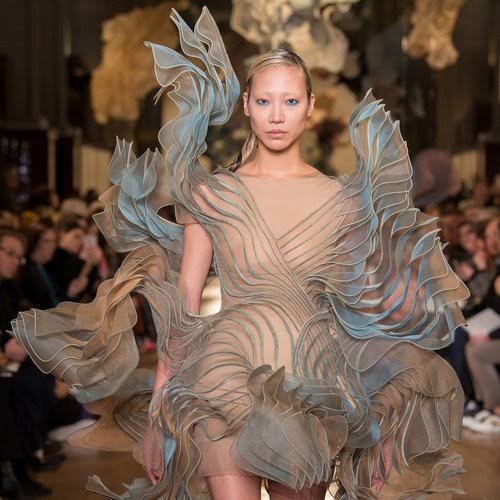
Photo credit: Textile Learner
Sustainable Manufacturing: The fashion world is well-known for its ecological footprint, especially regarding overproduction and waste. 3D printing is a greener alternative that only generates what is required, with less waste and fewer carbon footprint. Fashion companies are integrating 3D-printed components into designs, employing innovative materials such as biodegradable filaments and recycled plastics. As the technology continues to advance, 3D printing will be a leading factor in the move toward sustainability in the industry.
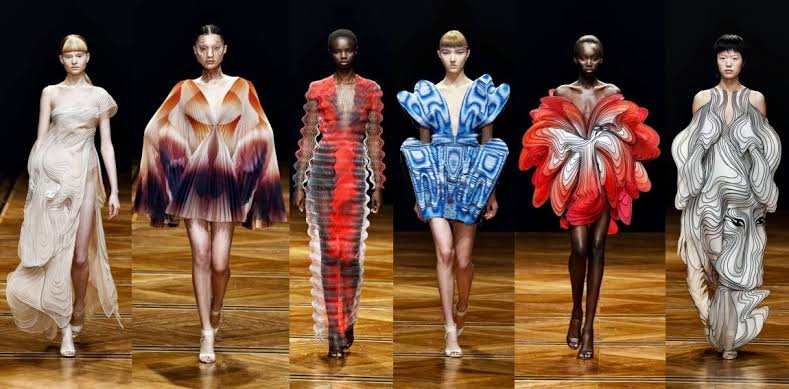
Photo credit: LinkedIn
3. Wearable Technology and Smart Fabrics
The wearable technology revolution that started in the mid-2010s has come a long way by 2025. The wearables of today are not merely about fitness tracking or communication; they are part of the fabric of fashion itself.
Smart Textiles and Clothing: By 2025, smart clothing is getting more sophisticated, with garments that can track health, adapt to climate, or even change color depending on mood or taste. For instance, jackets integrated with temperature-regulating textiles can self-adjust their temperature by the wearer’s body heat or the ambient environment. In the same vein, garments integrated with sensors can monitor life signs such as heart rate and blood pressure, providing wearers with real-time information.

Photo credit: Dell
Fashion as Function: Wearable technology has transcended mere devices such as smart watches. Technology is now integrated into clothes in a smooth way to promote functionality without losing fashion. Clothing that serves the purpose of both fashion and technology is no longer a novelty but a trend. For example, shoes with an integrated navigation system or clothes with internal LEDs to display personalized lighting have gone mainstream. This intersection of style and functionality makes wearables an integral component of the future of fashion.

Photo credit: Sport Tomorrow
4. Virtual Fashion and the Metaverse
The Metaverse has emerged as a major part of the fashion sector in 2025, providing new avenues for virtual clothing and virtual experiences. With the expansion of virtual worlds and augmented reality (AR), fashion is no longer limited to physical locations.
Virtual Fashion and Digital Clothing: Virtual fashion is blowing up in popularity in 2025. Virtual clothing that exists only for digital avatars has emerged as a significant segment of the industry, with high-end fashion brands such as Balenciaga and Gucci producing virtual-only collections. Virtual clothing can be worn in gaming, social media, and virtual reality spaces, enabling consumers to show off their style digitally.
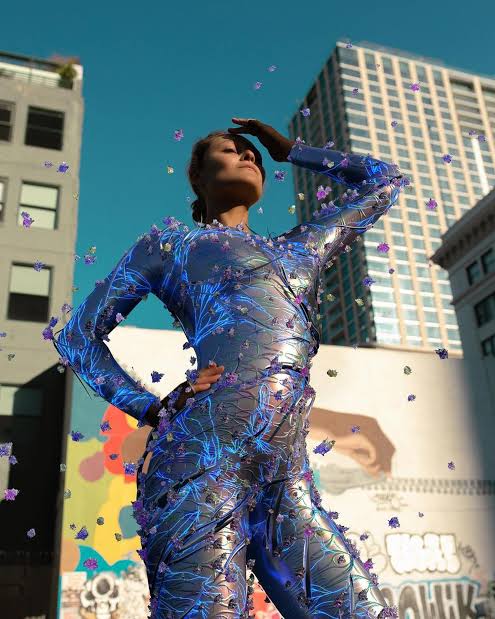
Photo credit: CNN
These platforms, such as DressX and The Fabrican, are pioneering the sale of virtual garments that can be worn in digital spaces such as the Metaverse. With virtual fashion, customers are accepting the notion of purchasing virtual garments for avatars as opposed to actual clothes, and the attraction is in its sustainability and unlimited imagination.
Virtual Try-Ons and Augmented Reality: The shopping experience powered by AR has changed how people shop for apparel. Many companies in 2025 provide virtual fitting rooms where consumers can virtually try on products before purchase. Utilizing AR, consumers can view how things will fit on their bodies via smartphones or AR glasses. This erases fit and size issues, as well as enabling a more tailored shopping experience.
Additionally, avatars powered by AI, through precise body measurements, have been the norm in digital try-ons, providing customers with the best possible simulation of how garments would fit them in both the real and virtual world.
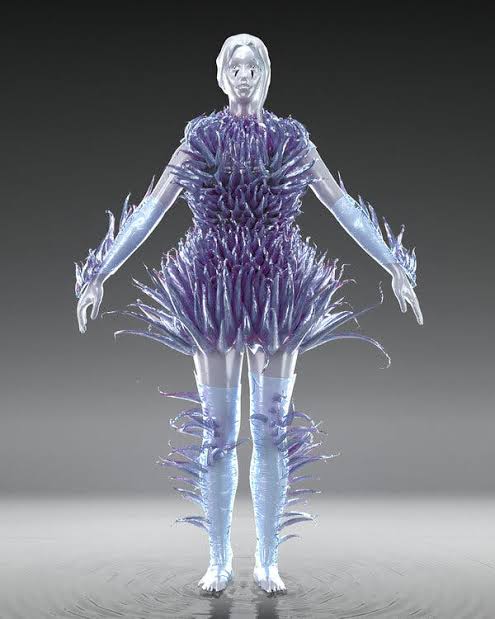
Photo credit: The New York Times
5. Blockchain and Transparency in Fashion
Blockchain technology, popularly associated with cryptocurrency, is expected to discover a revolutionary use in the fashion sector by 2025. As consumers are increasingly becoming aware of sustainability and ethical sourcing, fashion companies are looking towards blockchain to provide transparency and traceability across the supply chain.
Supply Chain Transparency: Blockchain allows brands to track every stage of a garment’s journey from raw material to production to delivery, building a clear, tamper-proof history. With blockchain, consumers can be sure their purchases are authentic and sustainable, and exactly where and how they were produced. Not only does this technology create trust with the consumer, but it also aids in the prevention of problems such as counterfeit products and unethical working practices.
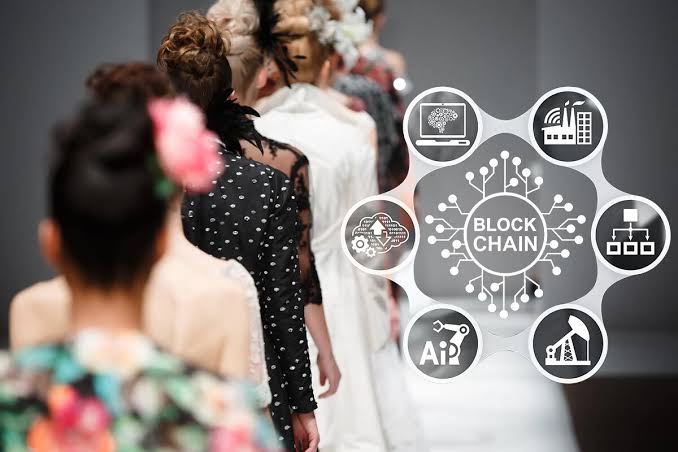
Photo credit: HashCash Consultants
Digital Ownership and NFTs: Non-fungible tokens (NFTs) have also made it into the fashion industry in 2025, enabling consumers to purchase unique digital fashion products and attest to their ownership with blockchain. Luxury fashion brands have started marketing limited-series digital clothing and accessories as NFTs, providing consumers with the chance to collect and swap unique virtual items. This has opened up a new market for digital luxury products where ownership is established by the blockchain, not by physical ownership.
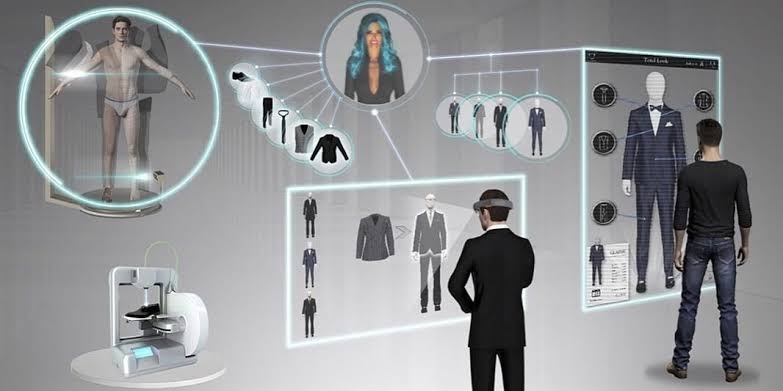
Photo credit: Medium
6. Sustainable Fashion Tech
The demand for sustainability in fashion increased in 2025, and technology has become instrumental in transforming fashion into an eco-friendly business.
Recycled and Bio-Based Textiles: More and more fashion companies are opting for fabrics using recycled content or bio-based material, including textiles from algae or mushroom leather. They are less water-intensive and less chemically dependent compared to conventional materials and, in the case of others, break down naturally at the end of their life cycle.
Waste-Reduction Technologies: New recycling technologies for vintage clothing are reducing textile waste. Advances in fabric recycling, including textile-to-textile recycling machines, enable brands to recycle old garments into new fibers, reducing landfill waste considerably. Digital printing technologies also minimize the use of excess dyeing, which tends to pollute the fashion world.
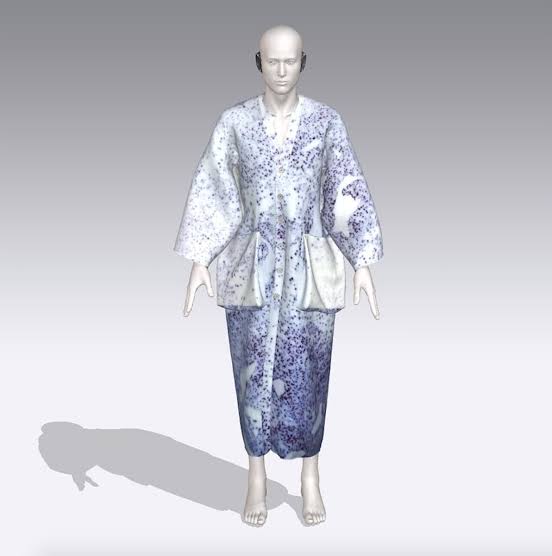
Photo credit: Fashionista
Conclusion: A New Era of Fashion Powered by Technology
By 2025, the convergence of technology and fashion will have not only transformed the way clothes are designed and marketed but also redefined what it means to be fashionable in the digital era. With technologies such as AI-powered design, 3D printing, wearable technology, virtual fashion, and blockchain-transparency, the fashion world is becoming more sustainable, customized, and interconnected than ever.
As these technologies develop further, the lines between the physical and digital will blur even more, opening up new avenues for creativity and innovation. For shoppers, this will translate to more personalized, transparent, and immersive experiences. For brands, it will mean the opportunity to be at the forefront of an age characterized by tech-savvy, environmentally conscious consumers.
The future of fashion in 2025 and beyond is digital, dynamic, and deeply connected with technology, heralding a new age of style and functionality.
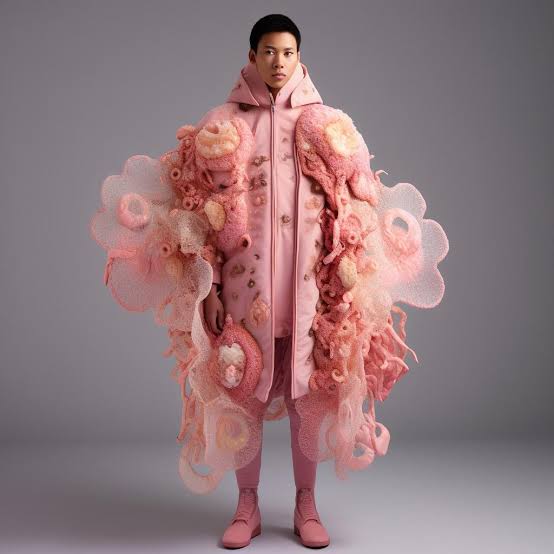
Photo credit: Reddit
FAQs: Intersection of Technology and Fashion in 2025
1. What is AI doing to fashion design in 2025?
AI is transforming fashion design through the ability of designers to use consumer data, forecast trends, and develop designs that are consistent with present and future market needs. AI can create intricate patterns, simplify the design process, and even make virtual prototypes, eliminating the necessity for physical prototypes.
2. What is the contribution of 3D printing to fashion in 2025?
3D printing fashion provides on-demand, customized designs that are made with little waste. It supports designers in exploring novel shapes and structures using eco-friendly materials, leading to more sustainable and individualized fashion. Consumers can also personalize clothing before printing, and the process is very personalized and less about overproduction.
3. What are “smart fabrics,” and how are they applied in fashion?
Intelligent fabrics are apparel infused with sensors or conductive fibers that can make clothes have functions other than those of clothing. In 2025, they can control temperature, measure health indicators (such as body temperature or heart rate), or shift color as a function of the wearer’s mood or of the environment around them. They are the result of the blend of fashion and technology, promising both style and functionality.
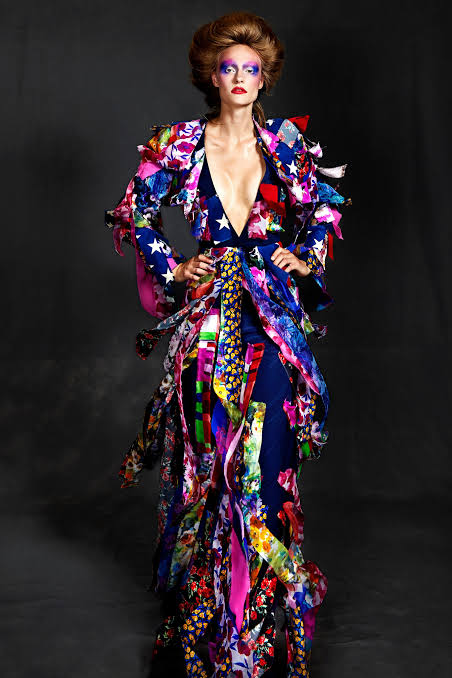
Photo credit: Grazia
4. What is the Metaverse, and how is it revolutionizing the fashion world?
The Metaverse is an immersive digital world that is virtual and in which individuals can socialize, interact, and create. In 2025, fashion brands are employing the Metaverse to sell virtual-only avatars’ clothing, enabling consumers to project their style digitally. Virtual fashion is on the rise, and brands such as Gucci and Balenciaga have already established virtual collections, a new milestone in digital fashion.
5. How does Blockchain enhance fashion sustainability?
Blockchain technology ensures there is a transparent and traceable method of ensuring that the origin and manufacturing processes of clothing are authenticated. Fashion brands can, through the use of blockchain, provide customers with evidence of ethical sourcing, sustainable production, and fair labor conditions, giving them more confidence in the products. This is particularly essential since the customers insist on knowing more about the environmental and ethical footprint of their purchases.
6. In what way is technology assisting fashion to become more sustainable?
Technology is making fashion companies more environmentally friendly by encouraging waste reduction, recycling, and green material use. Technologies such as 3D printing, textile recycling technologies, and the use of biodegradable textiles help companies reduce their carbon footprint. Intelligent manufacturing methods also make on-demand production possible, which prevents overproduction and unnecessary waste.
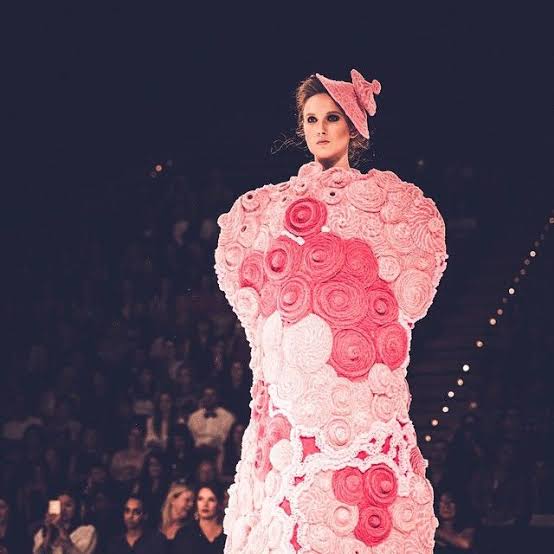
Photo credit: Pinterest
Author: Raja Bahar Khan Soomro
Further Suggested Readings
How Far Are We About Eco-Friendly Fashion in 2025? Let’s Discuss Key Insights
Recommended1 recommendationsPublished in apparel, Bathing Suits, Bridal, celebrity fashion, Our Fashion Passion, Petite, Plus Size, Pop Fashion, Shoes, street style, Uncategorized









